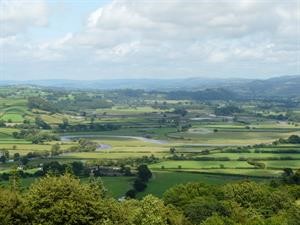Environmental assessment
 An early understanding of the potential consequences of plans and projects helps us to reduce and remedy adverse effects – or avoid them altogether. It is generally easier, more effective and cheaper to change projects or plans to avoid environmental damage when this is identified, considered, and actioned early on in their development.
An early understanding of the potential consequences of plans and projects helps us to reduce and remedy adverse effects – or avoid them altogether. It is generally easier, more effective and cheaper to change projects or plans to avoid environmental damage when this is identified, considered, and actioned early on in their development.
Our goal is to maximise beneficial effects whilst encouraging sustainable development.
There are three main environmental assessment processes, which are embedded in European, UK and Welsh law, and which need to be considered:
- Environmental Impact Assessment (EIA)
- Strategic Environmental Assessment (SEA)
- Habitats Regulations Assessment (HRA)
These webpages aim to explain briefly:
- What EIA, SEA and HRA are
- Natural Resources Wales’ different roles regarding them
Links to further information are provided throughout.
Environmental Impact Assessment (EIA)
What? EIA is a process for identifying the positive and negative environmental effects of proposed developments. It applies to projects which are likely to have significant effects on the environment because of their nature, size or location. The developer submits the EIA report along with the proposal to the decision makers (eg the local planning authority if planning permission is needed), and the decision makers consider the EIA along with the plan when deciding whether to grant consent.
Why? This allows the developer to consider and develop means to avoid, reduce or remedy any adverse environmental effects. It also makes the decision makers more aware of the predicted effects of the proposed project before granting consent for development.
Who is responsible for doing an EIA? The developer or project proponent.
Where to find out more about this?
For further information on EIA in Wales, see the Welsh Government’s Environmental Impact Assessment webpage.
Strategic Environmental Assessment (SEA)
What? Strategic Environmental Assessment or SEA is a way of assessing and monitoring the likely effects (positive and negative) of plans, programmes and strategies on the environment. It is similar to EIA, but applies at the level of the plan or strategy (eg Local Development Plan, or Transport Strategy) which sets the direction for future development projects. SEA can be incorporated into a broader assessment known as a Sustainability appraisal.
Why? Such assessments help to enable informed and transparent decision-making for the benefit of plan makers and the wider community in Wales.
Who is responsible for doing an SEA? All Welsh public bodies, and businesses acting in the public sector.
Where to find out more about this?
For further Welsh Government information on SEA in Wales, see the Welsh Government Strategic Environmental Assessment webpage.
For detailed guidance about SEA and how to carry out an SEA, see A practical guide to the SEA directive.
Habitats Regulations Assessment (HRA)
What? An assessment of the possible harm a project or plan could cause to certain specially protected sites. Across Wales and its coastal waters, certain sites of special wildlife and conservation importance are protected under European and international law.
Why? To ensure that significant damage to protected sites is avoided.
Who is responsible for the HRA? Plan-makers and project proponents, and public bodies responsible for granting any sort of permission of licence
Where to find out more about this?
Link to further Natural Resources Wales information on marine licensing and HRA
Link to further Welsh Government information on HRA & planning TAN 5 - Nature Conservation and Planning
Link to further Planning Inspectorate information on HRA (contains good information on HRA generally, not just in relation to Nationally Significant Infrastructure Projects).
New Environmental Impact Assessment (EIA) Regulations
New EIA regulations came into force on 16th May 2017 to reflect changes to the EIA Directive. These changes affect our various roles under the EIA framework as an advisor, regulator, land-manager, and project proponent. Links to the various new EIA Regulations are listed at the bottom of this page, which you should consider before consulting us.
Links to the various new EIA Regulations 2017 that cover Wales:
